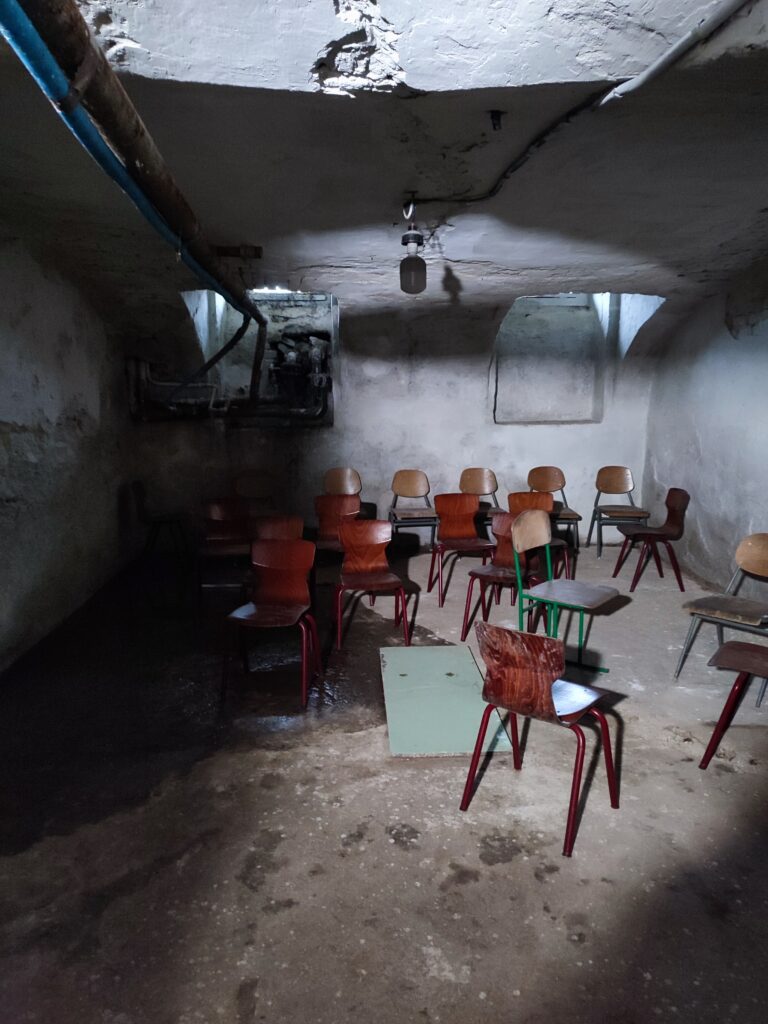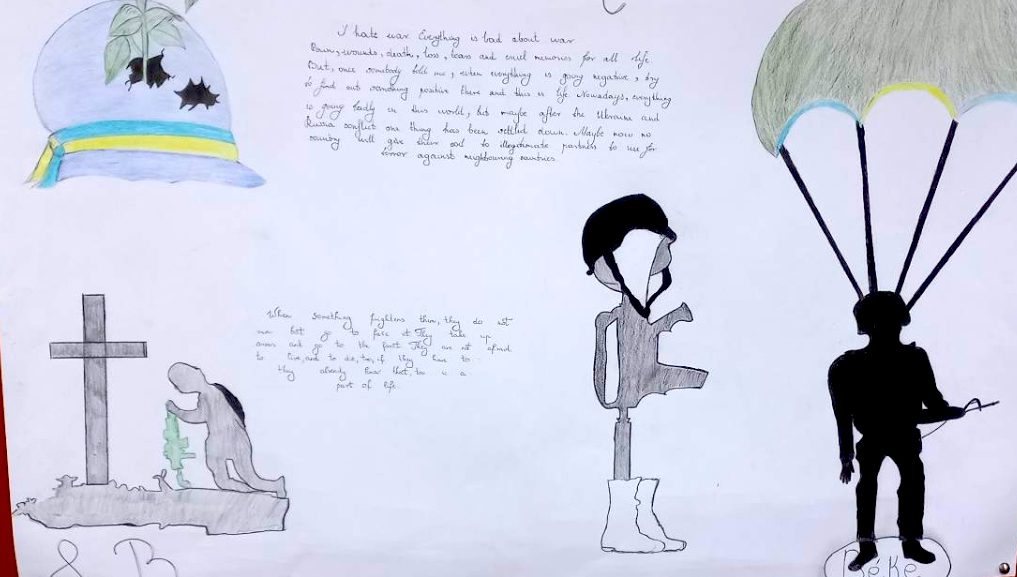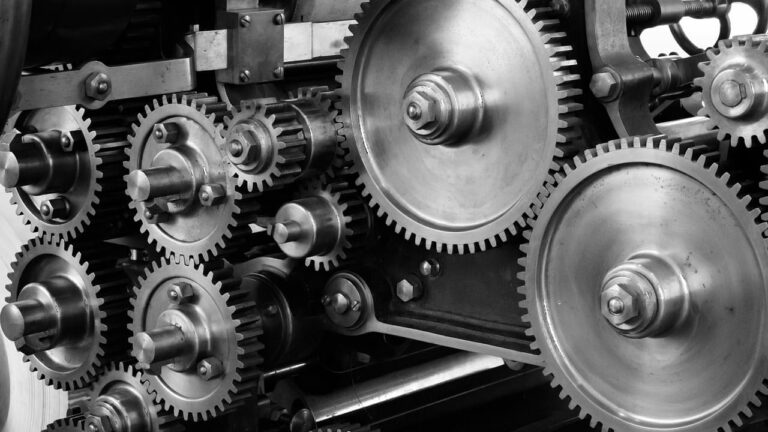Transcarpathia is a region in the westernmost corner of Ukraine, on the western slopes of the Carpathian Mountains, wedged between Slovakia, Hungary, and Romania. Being part of the Kingdom of Hungary for more than 900 years, then part of Czechoslovakia between the two world wars, before being annexed by the Soviet Union, Transcarpathia is now home to around 1 million Ukrainians and more than 100,000 ethnic Hungarians.
Although this far-away corner of Ukraine did not suffer bombings like most of the other regions of the country, it is traditionally one of the poorest parts of Ukraine, and it too suffers gravely from the consequences of the war.
An icy, bone-chilling wind howls at the Beregsurány border crossing between Hungary and Ukraine. Silence and darkness greet us as we enter the country at the otherwise noisy border crossing. We are heading to the city of Beregszász, only ten kilometres from the border of Hungary—also the border of the EU, and NATO.

Although the Russo-Ukrainian war, which has been going on for almost a year now, has so far—thank God—barely affected Transcarpathia at the level of military operations, it has nevertheless reshaped the everyday life of the region with its indirect effects.
The flow of refugees starting from Eastern and Central Ukraine arrived in Hungary via Transcarpathia, but at the same time, tens of thousands of them settled in this region of Ukraine furthest from the war.
This population movement—which saw newly transplanted Ukrainians take up residence in a space being evacuated by native residents—significantly transformed the ethnic spatial structure of the region, although the precise numbers are not known yet.
The experience of the locals shows that the Transcarpathian Hungarians are even more concentrated in Beregszász and its surroundings now, but most of the families that stayed in their hometown live separately, too.

Many of the Transcarpathian men of military age fled to Hungary, while many others remained, hiding from the authorities. The hopeless economic situation, the constant sense of danger, and the protracted war broke the strength of the Hungarian community, which was estimated at around 140–150,000 last year; however, it could not break them permanently.
Our visit to Beregszász confirmed that the will to live and the community cohesion give locals hope, even in miserable circumstances.
There are few cars waiting at the border, and only a few people go on foot. The blackouts that have been going on for weeks and the increasingly cold weather have slowed down movement across the border, but if we are lucky, we can cross it without any disturbance.

We are lucky. We can reach the Kossuth Lajos Lyceum, No. 4, in Beregszász with our donations without difficulty during our visit.
The now-shiveringly cold and musty building is the oldest Hungarian primary school in Transcarpathia. Principal Emese Vezsdel says that everyday life has completely changed during the past year. The air-raid alarm, for example, is already part of the locals’ daily practice. Not long ago, students had to march down to one of the shelters in Beregszász five or six times a day—recently, the sirens only go off once or twice a day. All of this has become a normal part of children’s lives; everyone knows what to do and follows the learned routine with discipline.
As the principal recounts, the discipline problems have almost completely disappeared—students have instinctively sensed that everyday life has to be reevaluated in this constant threat.
It is instructive how children’s psyches are affected by the war. The drawings displayed on the school walls tell stories of praying and kneeling soldiers, doves of peace, tanks, and bombings. It is impossible to guess to what extent the violence and the broken routine of life traumatise the souls of the smallest children in the long term.


In addition to the shortage economy that has prevailed throughout Ukraine for almost a year, the people living in Transcarpathia are being hit by new disasters. Kyiv now limits the energy supply; previously, this meant blackouts for a few hours of the day, but in recent weeks the power has only been supplied for a few hours a day.
The electricity comes back on at the most unexpected times of the day, so it often happens that families are baking, cooking, and washing in the middle of the night, at two o’clock in the morning, and they charge their phones and try to heat their apartment. Generators are a poor solution; their fuel consumption burdens the wallets of parents who earn wages worth 100-120 euros or dollars per month.
Thus, most of daily life in Beregszász is currently taking place in the dark without light or heating during Advent. The city seems to have been removed from modern times: street lighting does not work; there is blackness behind the windows; there is no internet, and receiving a wireless signal is haphazard.
Only a few hotels and residential buildings close to protected facilities have permanent electricity—people often go there to charge their phones and warm up, but there are also instances of power cuts even in these buildings. Bakeries are closing, as they cannot bake due to a lack of electricity. Restaurants are going bankrupt because of purchased and unrefrigerated raw materials. Families’ livelihoods have become impossible to sustain in recent days.

But what gives the locals hope? What confidence can they have? What keeps Beregszász from becoming a dead town?
Cars drive surprisingly disciplined on the dark streets, and shopping with a flashlight in darkened supermarkets does not cause any mayhem either. Life goes on as normal in the main square, and families notify each other via alert chain about places where there is electricity, where they can warm up a little, bake, and spend some time together in the light.
The Budapest-based Mathias Corvinus Collegium (MCC), which has been present in the city for five years training their participant in terms of community service, mobilised two hundred students and parents to a charity cake fair under the direction of Beáta Dobsa, Head of Mission of the Young Talent Program of the MCC and an indefatigable organiser of the local community. The event illuminated the vitality of the community and provided a model of support and altruism. It also showed solidarity among those living in a miserable situation, trying to provide for those even more downtrodden.
We also had a word with local parents. One of them told us that one can never get used to these inhuman conditions, but locals have learned to adapt.
Although the children read and play by candlelight, at least they read and play. Parents believe that as long as this fire lives in them, and as long as there are those who try to carry out their daily tasks even in such an impossible situation, Transcarpathia will have a future, a future for the local Hungarians too.






